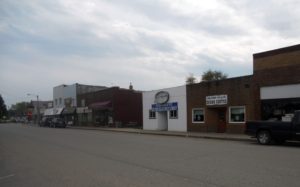While it’s possible to look back on 2016 as a single year, doing so doesn’t provide clarity. The past year was a culmination of a decades-long and ever widening urban-rural chasm.
To hear the national media tell it, the big news was the presidential election. But November was merely the coup de grace, a death blow to end ongoing suffering.
I began my career in journalism in the late 1980s. Those were perhaps the final heydays of community journalism — local papers, run by local families. The next decade was marked by large news corporations gobbling up smaller dailies and weeklies. Each incarnation brought more cost-effective management by new parent companies, and fewer local jobs. Local presses stood still. Circulation and ad sales were centralized. Newsrooms emptied.
Vertical integration of the news industry was shocking in small towns because it happened in public view, not because it was unique.

Farms, ranches and retailers were experiencing the same trends of economic nationalism and globalization. Vibrant towns built on diverse economies were hollowed out.
All of this, bleak as it may be, is personal to me. I grew up rural, and have family still trying to navigate a path forward.
In 2007, I pushed for the Farm and Ranch Assistance Network as part of the Farm Bill. U.S. Sen. Chuck Grassley, R-Iowa, and former Sen. Tom Harkin, D-Iowa, supported the national hotline and other behavioral health services as a proven way to reduce rural violence and suicides.
While the program was in the bill, Congress refused to fund it. Cost was less than one percent of Farm Bill expenditures. And now we know the result: Suicide rates continue to climb, are greater than during the 1980s farm crisis.
There’s no mystery why seething rural populist sentiment gravitated toward the ‘scorched Earth’ candidate, even when such loyalties were misplaced.
Since 2009, the Obama administration has made unprecedented investment in rural America. Not only did the administration launch the White House Rural Council, the first national interagency project that specifically focuses on rural issues, but it forcibly moved the nation beyond what previously amounted to lip service.
Under the leadership of Sec. Tom Vilsack, the USDA alone has launched public-private partnerships and invested billions to spur innovation, promote business and job growth, expand affordable housing and homeownership, increase internet access, repair infrastructure and more.
Progress was made, not that rural residents without local newspapers heard about it. Instead of local stories about critical county hospital or school repairs, conservative radio hosts said rural LGBT outreach was the Obama administration preparing a lesbian army to invade red states. Instead of hearing that pollution control measures under Obama’s Clean Water Act were less intrusive than water policies under the Reagan administration, rural residents were told the EPA was launching the “biggest land grab in the history of the world.”
In more ways than I can count, 2016 was the culmination of righteous frustration and over-the-top disinformation, predominantly centered on rural America. And, for perhaps the first time in two decades, rural residents won. They chose the man with the matchbook, and are now poised to dance around the fire.
Rural Iowans and Americans got what they said they wanted — a consolation prize for those who don’t believe they can get what they need.
This column by Lynda Waddington originally published in The Gazette on December 31, 2016. Photo credit: Lynda Waddington
